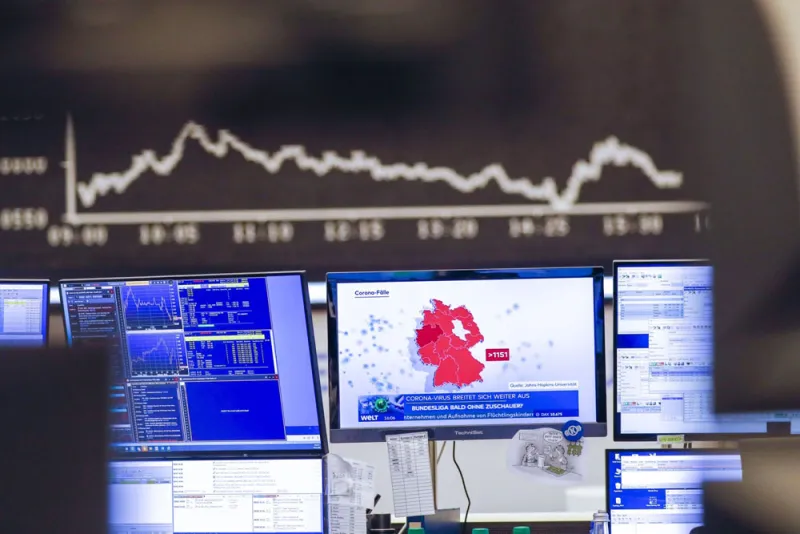The stock market selloff in early 2020 took with it a number of high-profile volatility-trading funds that were designed to do the opposite: provide a source of uncorrelated returns.
Now Markov Processes International has produced new research indicating that at least one fund was behaving as though it was selling risky hedges, or insurance in simple terms, against a stock selloff to other market participants. That’s the opposite of many of the funds’ objectives, according to investors familiar with the funds.
It’s unlikely that investors intended to be in the business of providing tail-risk hedges. But that may be exactly what they did, according to the findings of MPI, which used its proprietary, returns-based style analysis to delve into what drove the behavior of volatility funds, including Infinity Q, Malachite, Parplus Partners, and others, that blew up last year. Ideally, institutional investors should be able to identify the risk that is associated with their returns.
Volatility funds use derivatives, making the portfolios complex and opaque to many investors. Investors are attracted to the funds in part because they potentially offer a source of uncorrelated returns and consistent “income” from option premiums. After the blowups, many investors blamed the funds’ complexity for hiding risk. But MPI's research shows that investors interested in understanding the risks of complex funds can analyze returns using quant tools, without having access to any detailed position information.
MPI argues in the paper, which will be published shortly, that investors were selling tail risk strategies, or what it calls market crash insurance — in many cases without even knowing it.
“[W]hy would an institutional investor take the other side and actually sell tail risk insurance?” argues MPI in the paper. “Do they even know [they're doing it]? It seems obvious that selling Market Crash Insurance would serve to exacerbate an equity portfolio’s losses in a tail risk event, not hedge them.”
In its study, MPI compares the return patterns of tail risk strategies to insurance. Companies that sell tail risk insurance (market crash insurance) collect regular small premiums from policy holders and every once in a while pay out big claims, if all goes well. In the financial markets, investors who buy tail risk funds — market crash insurance — to protect themselves during selloffs pay a small fee over time that results in big payouts when markets go haywire. If they’re managed correctly — by both investors and managers — those big payouts allow investors to stay in the market through ups and downs over the long term.
In its analysis, MPI first created a Market Crash Insurance Factor, modeling how option premium payments steadily accumulated between the global financial crisis in 2008 and the pandemic in 2020. MPI’s 2008 to 2020 model, which uses the CBOE VIX Tail Hedge Index, shows that the premium payments then paid off for those investors when the market crashed in the early days of the pandemic. To clarify, last spring, those paying the premiums experienced a large return and those collecting the premiums experienced a large loss.
MPI then modeled what it would look like if investors were doing the exact opposite — selling market crash insurance. The research and analytics firm plotted this model right along with the S&P 500 index. In one example, between August 2008 and October 2008, an investor who sold market crash insurance, not surprisingly, ended up exacerbating equity losses that were sustained during the downturn that year. But before that, between March 2006 and June 2008, selling market crash insurance didn’t look correlated to the S&P at all – a positive for investors. In fact, if investors just saw the graph between March 2006 and June 2008, they might have thought that all was well. But during the worst of the financial crisis, the S&P and the strategy of selling market crash insurance moved in lockstep.
The research firm then went on to plot returns for tail risk strategies since 2008, during which time investors who sold risk strategies steadily earned almost 6 percent annually, without adding much volatility to their portfolio. That is, until the beginning of 2020. “Overlaying such a steady stream of returns over the S&P 500 index would have appeared to many investors as the desirable “alpha,” because the factor added little volatility to the portfolio and a significant return premium,” according to MPI.
But MPI argues that the 11 years of returns were not “textbook alpha” but instead made up of option premiums of sold out-of-the-money VIX options, and that the “negative skew of the return distribution” should have signaled to an investor that there was a risk of dramatic losses every once in a while. “But these large losses are very infrequent, so one would have had to look prior to the 11 years of returns to identify the historically infrequent yet large losses experienced by this factor,” according to MPI.
More than a decade of consistent gains were swiftly wiped out. As the author wrote, “The risk associated with the 11 years of consistently positive returns was made evident in only two months, February and March of 2020. In these two months alone, this factor lost 67.9 percent, eclipsing the total return premium generated over the previous 11 years.”
MPI includes in its research a case study of the Allianz Structured Alpha funds, a family of volatility funds that blew up in 2020. The Allianz funds, now the subject of a Department of Justice investigation and the subject of lawsuits from multiple pension funds, was designed to be hedged against downturns. Multiple versions of the fund lost a combined $4 billion for clients, and Allianz ended up shutting the hedge fund down, along with a mutual fund version. An Allianz spokeswoman declined to comment.
MPI used its proprietary dynamic style analysis, similar to other returns-based quantitative techniques, to model what might have happened. In the end, one factor explained what led to the meltdown: the so-called sold market crash insurance factor described earlier.
Investors in the fund were essentially selling market crash insurance to tap the steady premium. MPI illustrates how the performance of the two factors (the second being the S&P 500) closely mirrored the fund’s actual returns from 2012 right up to the beginning of 2020, when it experienced dramatic losses. At the time, investors were selling off assets as it became clear that a pandemic was about to shut down economies around the globe. As a result, Allianz’s option portfolio collapsed. “The combination of the losses on the stock position and the losses selling market crash insurance led to the catastrophic losses experienced by this family of funds,” according to MPI.
“This particular product’s behavior was that of a tail hedge strategy, but with a negative sign,” Michael Markov, co-founder and chairman, told II. “From a quantitative perspective, pretty much everything was explained by just this one factor. They sold the fund to pension funds, which effectively took on the role of an insurance company. Again, with a caveat that this is based on our analysis of returns, as we had no information about the funds’ holdings.”
MPI cautions investors to closely examine where excess returns are coming from, and to keep in mind that risk is always lurking. Returns are related to the amount of risk taken, and when that relationship is too good to be true, it’s time to dig in further.
“Alpha seems to be another version of a hoped-for free lunch that gets investors salivating: expecting much higher return for seemingly the same amount of risk,” MPI’s report explained. “However, before sitting down to such a lunch, it's prudent to make sure that the food is good and that the cashier is not waiting for you at the door with a bill.”







